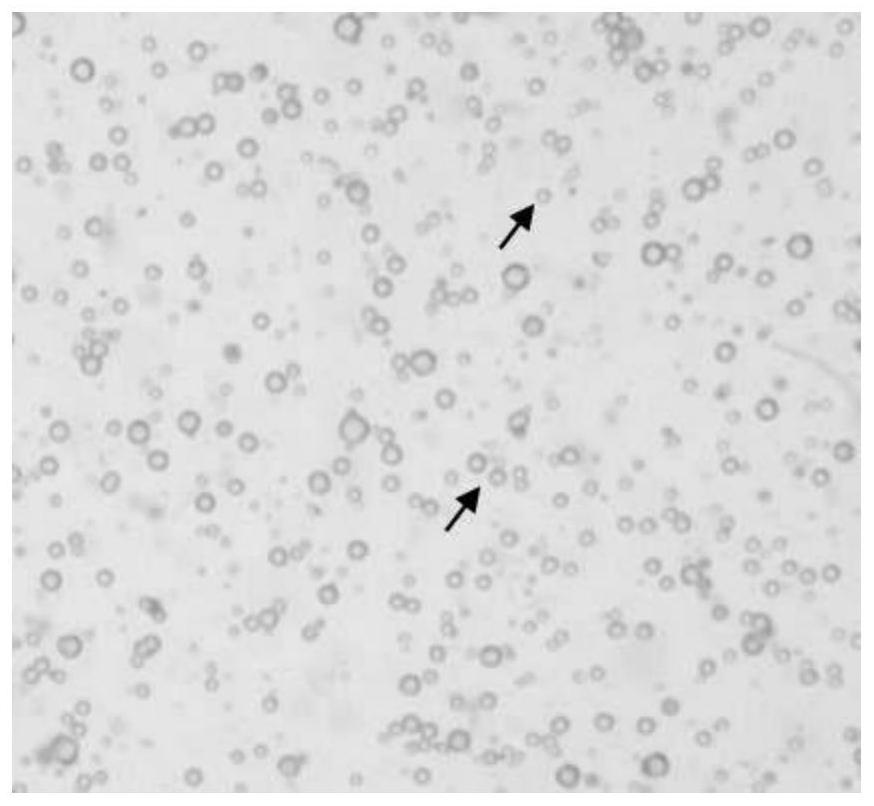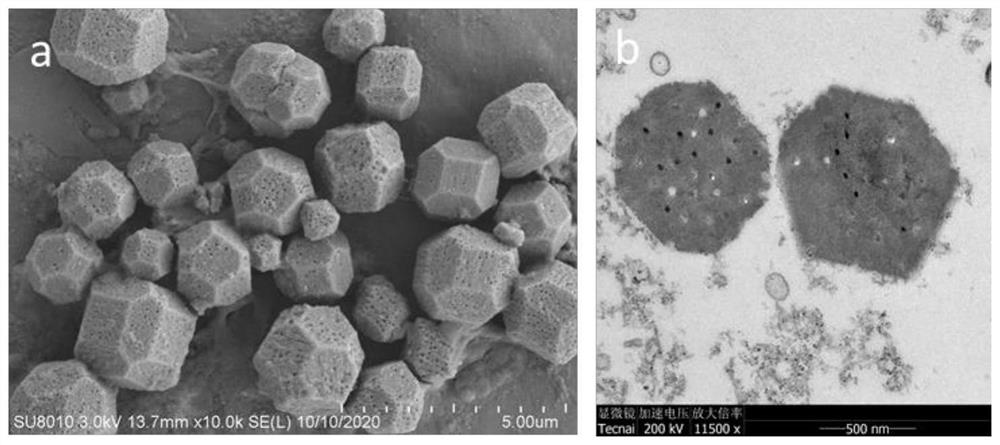Clanis bilineata tsingtauica cytoplasmic polyhedrosis virus strain as well as proliferation method and application thereof
A technology for cytoplasmic polyhedrosis and bean hawkmoth, applied in the field of microorganisms, can solve problems such as easy mixing of large impurities, inconvenience in collecting insect larvae corpses, and no research or application report on bean hawkmoth plasmic polyhedrosis virus, and avoid the problems of Pollution, the effect of strong insecticidal power
- Summary
- Abstract
- Description
- Claims
- Application Information
AI Technical Summary
Problems solved by technology
Method used
Image
Examples
Embodiment 1
[0018] Embodiment 1: Separation and purification method of bean hornworm plastotype polyhedrosis virus
[0019] The virus of the present invention is isolated from the dead samples of bean hornworm larvae that died naturally from the disease in soybean planting fields in Hubei. The epidermis of the insect corpse is not liquefied and shriveled. The corpse has no obvious signs of fungal fruiting body growth, and the corpse has no foul smell. It presents a typical phenotype of cytoplasmic polyhedrosis virus infection and death. The phenotype of the corpse is as follows: figure 1 shown.
[0020] After the insect corpses are collected, put them into sterile 50mL plastic tubes and bring them back to the laboratory for identification. Use a high-pressure sterilized mortar to grind the insect corpses, add 0.1wt% SDS solution, mix well, pour into a funnel with four layers of gauze and filter to remove the tissue residues of the insect corpses, and use a 50mL plastic tube to collect an...
Embodiment 2
[0022] Example 2: Electron Microscopic Observation of the Microscopic Morphology of Bean Hornmoth Phytotype Polyhedrosis Virus
[0023] Scanning electron microscope sample preparation: take the purified polyhedron precipitate and mix it with a small amount of distilled water, negatively stain with 2wt% phosphotungstic acid with a pH of 10.6 for 2-3min, add it dropwise on the 400-mesh copper mesh Fomnvar membrane, and filter paper from the edge of the copper mesh Gently suck off the excess negative staining solution; electron microscope section preparation: take the purified polyhedron precipitate and add 2.5wt% glutaraldehyde-0.1mol / L phosphate buffer solution with a pH of 7.2, and fix it in a refrigerator at 4°C; Wash three times with 0.1mol / L PBS, 15min each time; then fix with 1wt% osmic acid at room temperature for 2-3h; wash three times with 0.1mol / L PBS with pH 7.2; , 100wt% series concentration of ethanol for dehydration; soak in acetone for 15 minutes, then soak in ace...
Embodiment 3
[0025] Example 3: Secondary Infection of Scutellaridae Larvae and Phenotypic Analysis
[0026] After initially confirming that the pathogen is a cytoplasmic polyhedrosis virus through phenotypic analysis and microscopic examination, in order to further verify that the pathogen is indeed our purified cytoplasmic polyhedrosis virus particles, we smeared these purified aqueous solution of polyhedron particles on fresh Phyllostachys japonica Peach leaves, the leaves were fed to healthy oleander hawkmoth larvae belonging to the family Sculptidae, and it was found that the grinding liquid of insect corpses could infect and kill oleander hawkmoth larvae 100% (N=120); in addition, we found that , the phenotypes of these oleander larvae after death were very similar to those of the dead larvae of the oleander larvae collected in the field: that is, the epidermis was intact, without liquefaction symptoms, shriveled, and the carcasses had no foul smell, and Zombie-like phenotype after no...
PUM
 Login to View More
Login to View More Abstract
Description
Claims
Application Information
 Login to View More
Login to View More - R&D
- Intellectual Property
- Life Sciences
- Materials
- Tech Scout
- Unparalleled Data Quality
- Higher Quality Content
- 60% Fewer Hallucinations
Browse by: Latest US Patents, China's latest patents, Technical Efficacy Thesaurus, Application Domain, Technology Topic, Popular Technical Reports.
© 2025 PatSnap. All rights reserved.Legal|Privacy policy|Modern Slavery Act Transparency Statement|Sitemap|About US| Contact US: help@patsnap.com



